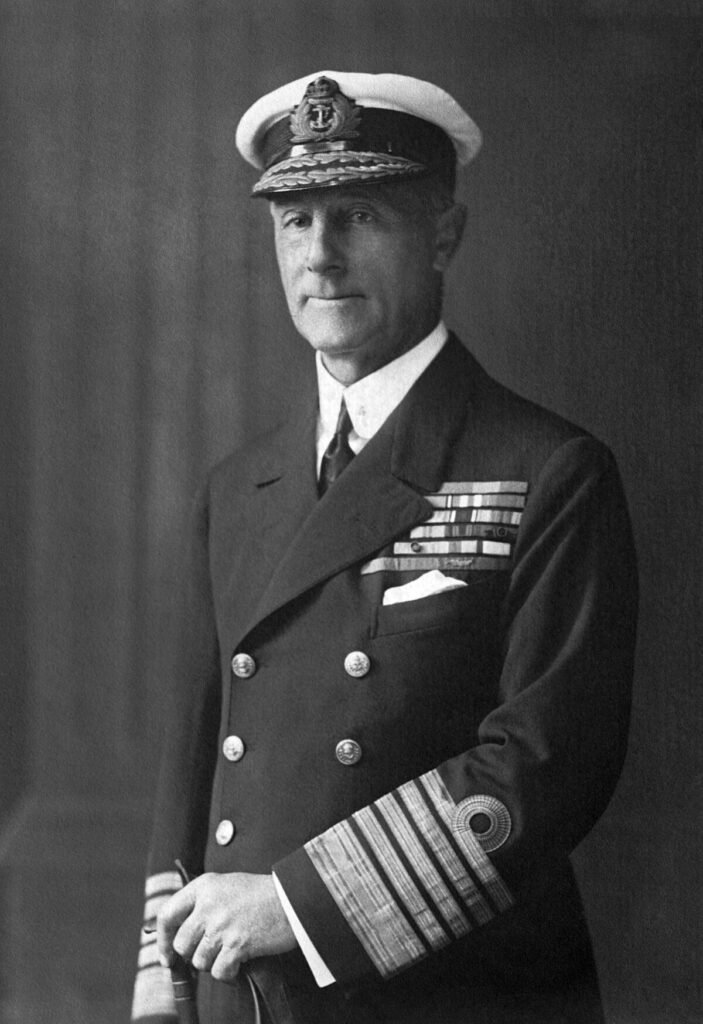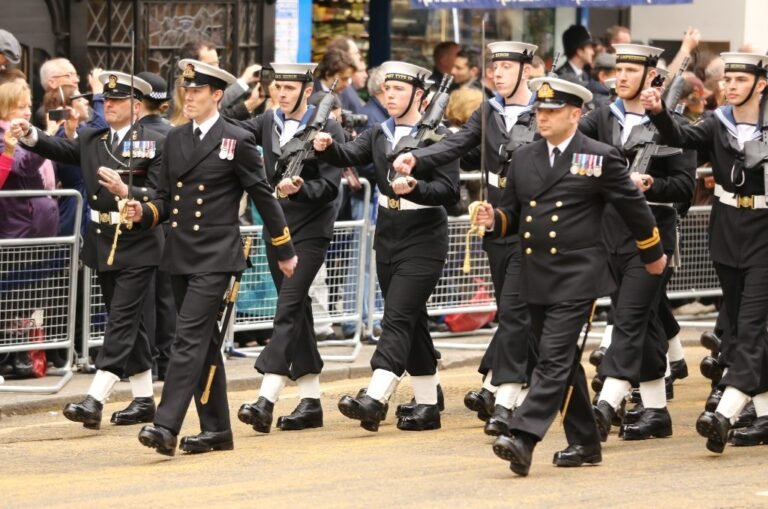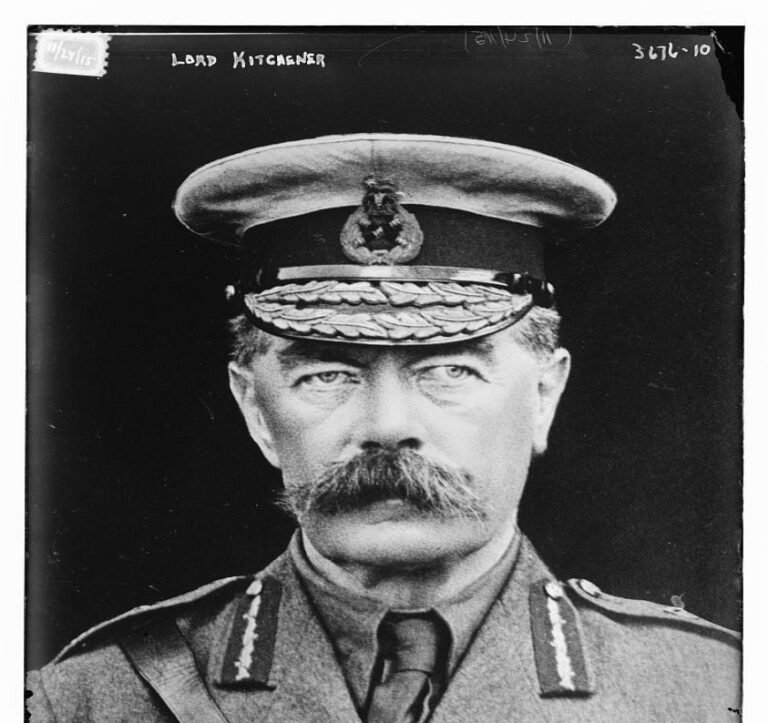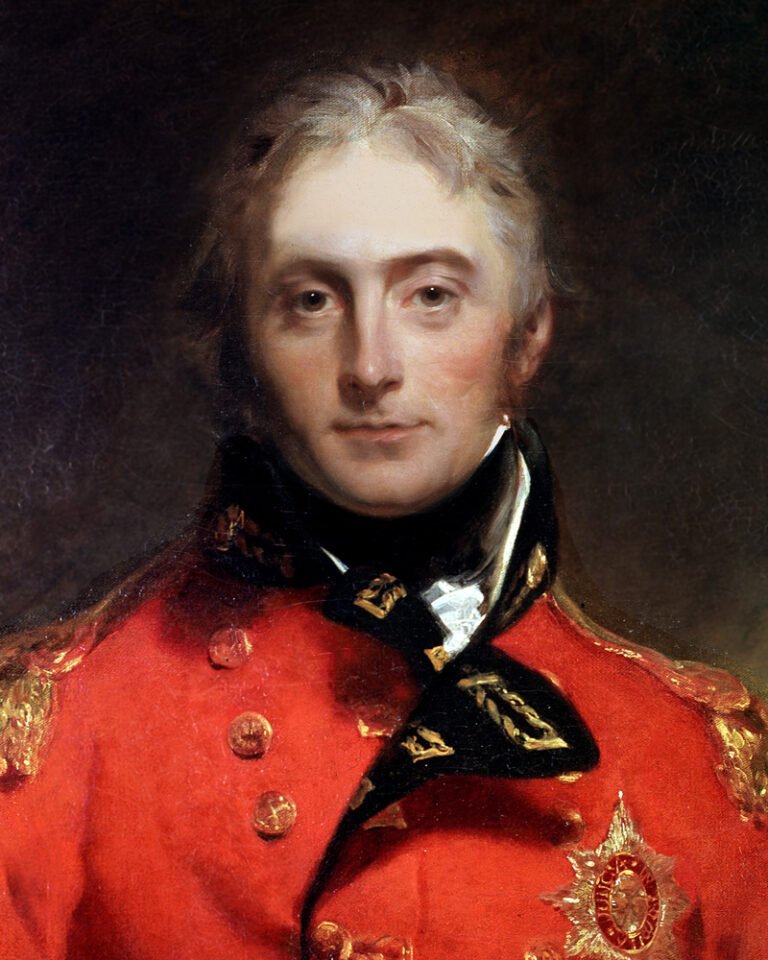Admiral John Jellicoe played a crucial role during World War I. His leadership at sea was pivotal for the British Navy.
Born in 1859, Admiral Jellicoe grew up to become one of the most respected naval officers in British history. His career spanned several decades, marked by his strategic brilliance and dedication. Jellicoe’s most notable moment came during the Battle of Jutland in 1916.
As the commander of the Grand Fleet, he faced the German Navy in one of the largest naval battles of the war. His decisions during this battle were heavily scrutinized, yet they helped maintain British naval supremacy. Understanding Jellicoe’s impact offers insights into naval warfare and leadership during a critical period in history.

Credit: www.britannica.com
Early Life And Career
John Jellicoe was born in Southampton, England, in 1859. He joined the Royal Navy at age 13, beginning a notable maritime career.
Admiral John Jellicoe was a significant figure in British naval history. His journey to becoming one of the most renowned naval commanders started from humble beginnings. Let’s delve into his early life and career to understand the man behind the uniform.
Birth And Family Background
John Jellicoe was born on December 5, 1859, in Southampton, England. He hailed from a maritime family, which greatly influenced his career choice. His father, John Henry Jellicoe, was a captain in the merchant navy.
Growing up in a seafaring environment, young John was naturally drawn to the ocean. His family’s naval background provided him with stories and experiences that sparked his interest in a naval career. Imagine sitting at the dinner table, listening to tales of high-seas adventures; it’s no wonder he was captivated by the idea of sailing.
Education And Naval Training
Jellicoe’s formal education began at the prestigious Rottingdean School. His academic prowess, particularly in mathematics, set him apart. However, books were just the beginning.
At the age of 12, he joined the Royal Navy as a cadet at the HMS Britannia training ship. This was no ordinary schooling; it was rigorous and demanding. The training was intense, focusing on discipline and practical skills.
One of the standout moments was his time on the HMS Excellent, where he mastered gunnery. This was a pivotal skill that would later define his naval strategies. His dedication and hard work paid off, earning him rapid promotions.
Can you imagine the pressure and excitement of a young cadet learning the ropes? It’s a testament to his determination and passion for the navy.
Jellicoe’s early life and career were shaped by his family background and rigorous training. This foundation was crucial for his future success. What lessons can you draw from Jellicoe’s early experiences? Could your background and training similarly influence your career path?

Credit: en.wikipedia.org
Rise Through Naval Ranks
Admiral John Jellicoe rose through the naval ranks to become a key leader in World War I. His strategic skills and leadership were crucial in the Battle of Jutland.
## Rise Through Naval Ranks
Admiral John Jellicoe’s journey through the ranks of the Royal Navy is a testament to determination, skill, and leadership. From his early days as a young cadet to commanding the Grand Fleet, Jellicoe’s career is filled with significant milestones that shaped his path. This section explores his rise through the naval hierarchy, highlighting key assignments, promotions, and roles that defined his legacy.
###
Initial Assignments
Jellicoe’s naval career began in 1872 when he joined the Royal Navy as a cadet. His initial assignments were on various ships where he quickly demonstrated his potential.
Onboard HMS Britannia, Jellicoe showed remarkable aptitude. His early exposure to the demands of naval life prepared him for the challenges ahead.
Serving in the Mediterranean fleet, he gained valuable experience. These early years were crucial in building his foundation as a competent officer.
###
Promotions And Key Roles
Jellicoe’s rise was marked by a series of well-deserved promotions. Each new rank brought greater responsibility and opportunities to showcase his leadership.
As a young lieutenant, Jellicoe was involved in the Egyptian War of 1882. His bravery and strategic acumen did not go unnoticed.
Promoted to commander, he played a vital role in the development of naval gunnery. His efforts significantly improved the effectiveness of the fleet’s firepower.
In 1907, Jellicoe became a rear admiral. His leadership during the Dreadnought era was pivotal, ensuring the Royal Navy remained a formidable force.
By 1914, Jellicoe was appointed commander of the Grand Fleet. His strategic decisions during World War I, particularly at the Battle of Jutland, were critical.
Jellicoe’s career was a series of calculated steps and bold moves. What drives you to pursue your goals? Are you ready to seize opportunities as they come?
His journey reminds us that each step, no matter how small, can lead to great achievements. How will you navigate your path to success?
Role In Pre-war Naval Preparations
Admiral John Jellicoe played a crucial role in preparing the British Navy before World War I. His foresight and leadership helped shape naval strategies that proved vital during the war. Jellicoe’s efforts ensured the British fleet was ready and capable of facing any threat.
Modernizing The Fleet
Jellicoe focused on modernizing the fleet. He introduced new technologies and advanced ship designs. These changes improved the fleet’s speed and firepower. New battleships and cruisers were added. Enhanced defensive capabilities made the fleet more resilient.
He also emphasized training. Sailors learned to handle new equipment and tactics. This made the British Navy more versatile and effective. Jellicoe’s modernization efforts gave the fleet a competitive edge.
Strategic Planning
Jellicoe excelled in strategic planning. He analyzed potential threats and prepared accordingly. His strategies were designed to counter enemy movements. Plans included detailed maneuvers and positioning.
He collaborated with other military leaders. Together, they created cohesive strategies that unified naval operations. These plans ensured efficient resource allocation. Jellicoe’s strategic foresight played a key role in the Navy’s readiness.
Leadership In World War I
Admiral John Jellicoe played a key role in World War I. His leadership shaped many naval strategies. He was known for his calm and calculated decisions. Let’s explore his significant contributions.
Appointment As Commander
In 1914, John Jellicoe was appointed as Commander of the Grand Fleet. This role was crucial for Britain’s naval strength. His extensive experience and expertise made him the right choice. His leadership aimed at maintaining naval superiority.
Battle Of Jutland
The Battle of Jutland was a major naval battle in World War I. Jellicoe commanded the British fleet with precision. The battle took place in 1916 and was the largest naval clash of the war. Jellicoe’s tactics were both praised and criticized.
He managed to inflict significant damage on the German fleet. Yet, the battle’s outcome was inconclusive. Many believed his cautious approach saved the fleet. Others wished for a more aggressive stance. Nevertheless, Jellicoe’s leadership remained influential.
Controversies And Criticisms
Admiral John Jellicoe faced controversies for his decisions during the Battle of Jutland. Critics argued his cautious tactics cost a decisive victory. His leadership sparked much debate among historians and naval experts.
Admiral John Jellicoe, a key figure during World War I, has his share of controversies and criticisms. While his leadership at the Battle of Jutland is often discussed, it’s important to look deeper into the tactical decisions and public reactions that shaped his legacy. Understanding these aspects can provide valuable insights into naval history and leadership.
Tactical Decisions
Jellicoe’s tactical decisions during the Battle of Jutland are a subject of much debate. Critics argue that his cautious approach prevented a decisive victory against the German fleet. They believe he missed an opportunity to crush the enemy and secure naval dominance.
On the other hand, supporters defend his decisions as prudent. They say his caution was necessary to avoid risking the entire British fleet. Losing the fleet would have had catastrophic consequences for Britain.
Jellicoe’s choices were influenced by the information available at the time. It’s easy to criticize with the benefit of hindsight. Would you have made different decisions under similar pressure?
Public And Political Reactions
Public and political reactions to Jellicoe’s actions were mixed. Some praised him for his steady leadership during a critical moment. They saw his efforts as essential to maintaining British naval superiority.
However, others were less forgiving. Newspapers and politicians criticized him for not achieving a clear victory. The lack of a decisive win left many feeling frustrated and doubtful about his capabilities.
Personal experiences can shape our views on leadership. Have you ever faced criticism for making a cautious decision? Reflecting on Jellicoe’s situation might provide a new perspective on the balance between caution and boldness in leadership.
Understanding the controversies and criticisms surrounding Jellicoe helps us appreciate the complexities of command during wartime. It also raises important questions about how we judge leaders in hindsight. What do you think? Is it fair to criticize Jellicoe’s decisions without considering the context in which they were made?
Post-war Contributions
Admiral John Jellicoe played a significant role in the modernization of the British Navy after World War I. His leadership and strategic expertise helped shape naval policies and improve fleet operations.
Admiral John Jellicoe’s contributions didn’t end with World War I. After the war, he continued to serve his country in various significant roles. His efforts helped shape the future of the Royal Navy and the United Kingdom.
Naval Reforms
Jellicoe focused on modernizing the Royal Navy. He saw the need for new technologies. He worked on improving naval strategies. He advocated for better training for sailors. He believed in a strong and prepared navy. His reforms aimed to prevent future conflicts.
Jellicoe introduced new ship designs. He promoted the development of submarines. He also emphasized the importance of air power. These changes ensured the navy stayed ahead.
Public Service
After his naval career, Jellicoe served in public roles. He was appointed Governor-General of New Zealand. His leadership skills were valued there. He worked on improving the country’s defenses. He also focused on social issues.
Jellicoe supported veterans. He helped them reintegrate into society. His dedication to public service was evident. He remained an influential figure. His contributions continued to benefit many.
Admiral John Jellicoe’s post-war contributions were significant. He left a lasting impact on the navy and society.
Legacy And Honors
Admiral John Jellicoe left a lasting impact on naval history. His leadership during World War I earned him a revered place in history. Many honors and memorials commemorate his significant contributions.
Monuments And Memorials
Several monuments honor Admiral Jellicoe’s legacy. The Jellicoe Memorial in St. Paul’s Cathedral, London, is a prominent one. This grand memorial showcases his importance in British naval history. Another notable monument is in Trafalgar Square, where his statue stands among other great naval leaders.
In New Zealand, Jellicoe Park in Auckland is named after him. The park serves as a public space where visitors can learn about his contributions. These monuments and parks ensure his legacy endures for future generations.
Books And Biographies
Many books and biographies chronicle Admiral Jellicoe’s life. “The Grand Fleet 1914-1916” is one of his own works. In this book, Jellicoe gives a detailed account of his experiences during World War I. It remains a significant historical document.
Another notable biography is “Jellicoe: A Biography” by Admiral Sir Reginald H. Bacon. This book offers insights into Jellicoe’s character and leadership. These works provide readers with a deeper understanding of his impact on naval warfare.

Credit: www.rmg.co.uk
Personal Life And Family
Admiral John Jellicoe, born in Southampton, England, led a distinguished naval career. He married Gwendoline Cayzer and had six children. Jellicoe’s family life remained private while he served his country.
Admiral John Jellicoe is a name that resonates with naval history enthusiasts. Yet, beyond his notable achievements in the Royal Navy, there lies a compelling narrative about his personal life and family. This section will delve into the aspects of his life that shaped him as a person beyond his naval uniform.
Marriage And Children
Admiral John Jellicoe married Gwendoline Cayzer in 1902. Their union was not just a partnership but a strong foundation that supported Jellicoe through his demanding career.
Gwendoline was known for her unwavering support and played a significant role in managing their household. Together, they had six children. Their home was filled with the laughter and activities of a lively family, which provided Jellicoe with a sanctuary away from his naval duties.
Hobbies And Interests
Jellicoe was not all about naval strategies and warfare. He had a keen interest in gardening, which he found relaxing and rewarding. Tending to his garden allowed him to unwind and connect with nature.
He also enjoyed reading, especially historical and military literature. This not only broadened his knowledge but also provided inspiration and insights that he applied in his naval career.
Do you ever wonder how someone as busy as Jellicoe found time for such simple pleasures? His story reminds us of the importance of balance in our lives.
Incorporating hobbies and personal interests can provide a much-needed break from our daily grind. So, what hobbies or activities do you pursue to find your balance?
FAQs
What Did Admiral Sir John Jellicoe Do?
Admiral Sir John Jellicoe commanded the British Grand Fleet during World War I. He led forces at the Battle of Jutland.
Was Jellicoe A Good Admiral?
Yes, Jellicoe was a good admiral. He effectively commanded the British Grand Fleet during World War I, notably at the Battle of Jutland.
Who Was The Only Man Who Could Lose The War In An Afternoon?
Napoleon Bonaparte was the only man who could lose the war in an afternoon. His decisions during battles were crucial.
Was Admiral John Jellicoe At The Battle Of Jutland?
Yes, Admiral John Jellicoe commanded the British Grand Fleet at the Battle of Jutland during World War I.
Conclusion
Admiral John Jellicoe’s legacy endures in naval history. His strategic mind and leadership were crucial in World War I. Jellicoe’s decisions at the Battle of Jutland had lasting impacts. He inspired many with his dedication and service. Studying his life offers valuable lessons in leadership and strategy.
His contributions to the Royal Navy remain significant. Remembering Jellicoe helps us appreciate the complexities of wartime command. His story continues to fascinate and educate future generations.








